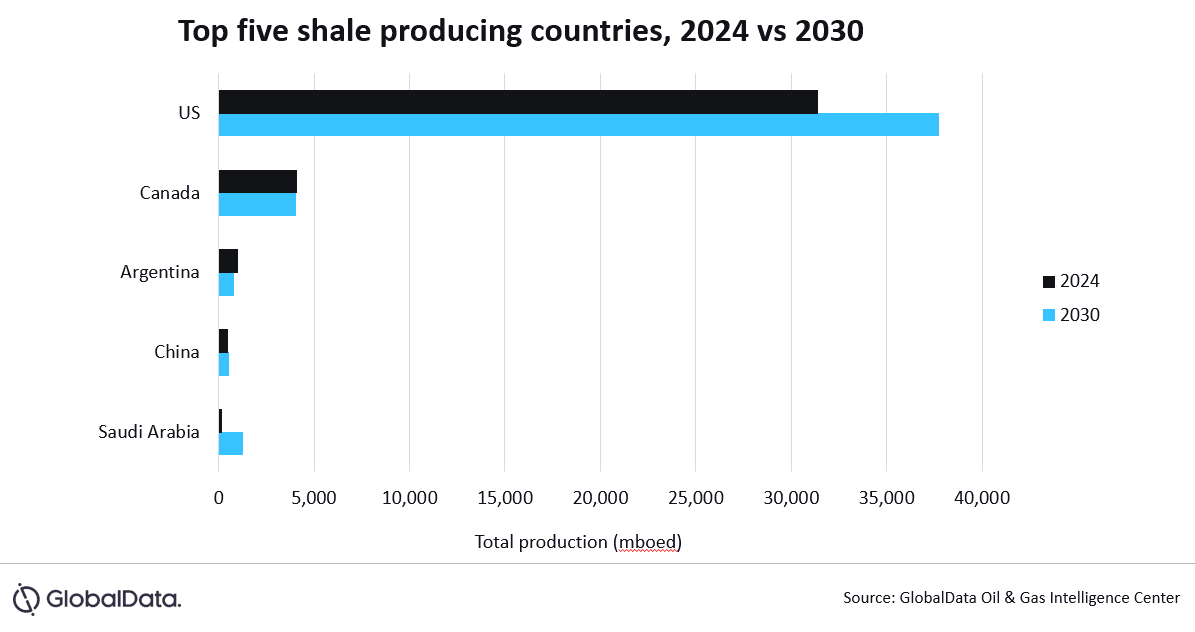The global shale oil and gas production outlook indicates a positive trend, with notable increases in production expected from top countries over the next few years, including the incumbent leader the US. Although the pace of growth has somewhat receded in the US, optimism around this unconventional resource remains, driven by technological advancements and significant discoveries in countries such as China, Argentina, and Saudi Arabia, according to GlobalData, a leading data and analytics company.
GlobalData’s Strategic Intelligence report, “Emerging Oil and Gas Shale Plays,” reveals that the US was the undisputed leader in global shale oil and gas production with over 80% share in 2024, thanks to its vast reserves, advanced extraction technologies, and supportive regulatory environment.
Ravindra Puranik, Oil and Gas Analyst at GlobalData, comments: “The combination of hydraulic fracturing and horizontal drilling has unlocked unprecedented volumes of shale resources, particularly in formations like the Permian Basin, the Eagle Ford, and the Marcellus Shale. The growth of the shale industry has bolstered the US energy independence, reducing reliance on foreign oil and altering the country’s geopolitical strategy.”
ExxonMobil, Chevron, ConocoPhillips, and Occidental Petroleum are among the global leaders in shale production with a prominent presence in shale plays across the US Lower 48. Beyond the US, companies such as Canadian Natural, ARC Resources, YPF, and Tourmaline are the top producers of shale oil and gas globally.
Canada holds the second-largest recoverable reserves of shale oil and gas after the US. It is also ranked second in production due to the technological similarities with its neighbour and government encouragement for unconventional hydrocarbon development.
Argentina is another emerging hotspot for shale oil and gas, particularly the Vaca Muerta formation, which is characterized by strategic asset management by YPF, significant infrastructure investment, and robust growth in production and exports.
Recently, China has made significant strides in shale oil exploration, which could enhance its energy security and reduce dependency on foreign oil supplies. Besides, Saudi Arabia is exploring gas shales within its northern and eastern regions to achieve a 60% rise in its gas output from 2021 to 2030.
Puranik concludes: “The future of shale oil and gas will be shaped by a delicate balance between technological innovation, cost efficiency, and environmental stewardship. Countries that can align production growth with carbon management and energy transition goals will not only secure domestic energy resilience but also strengthen their position in an increasingly competitive and sustainability-driven global market.”






